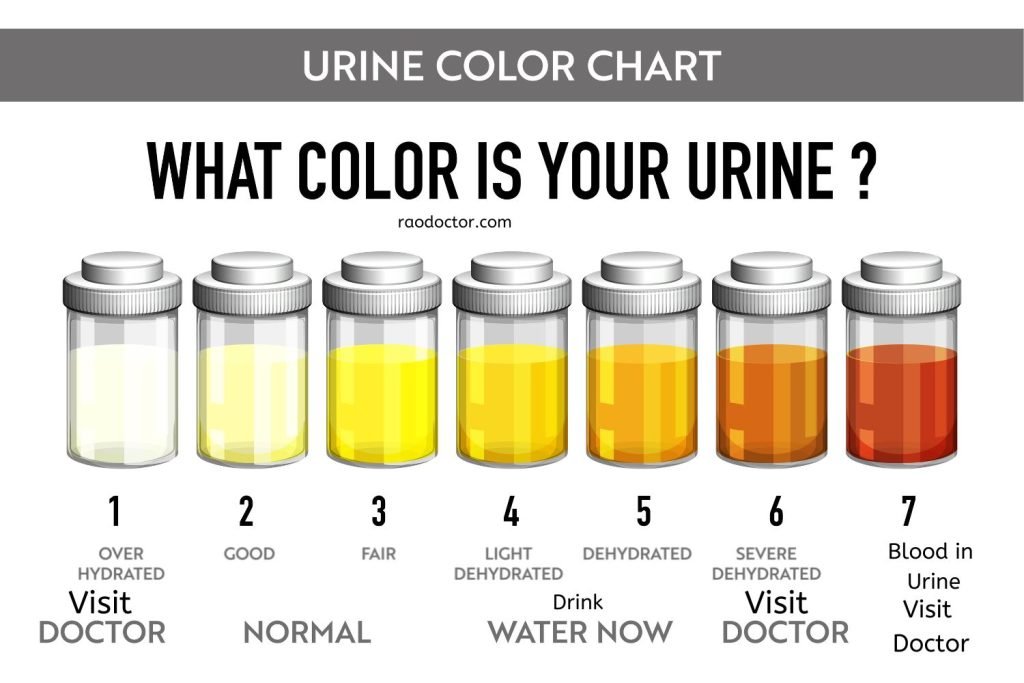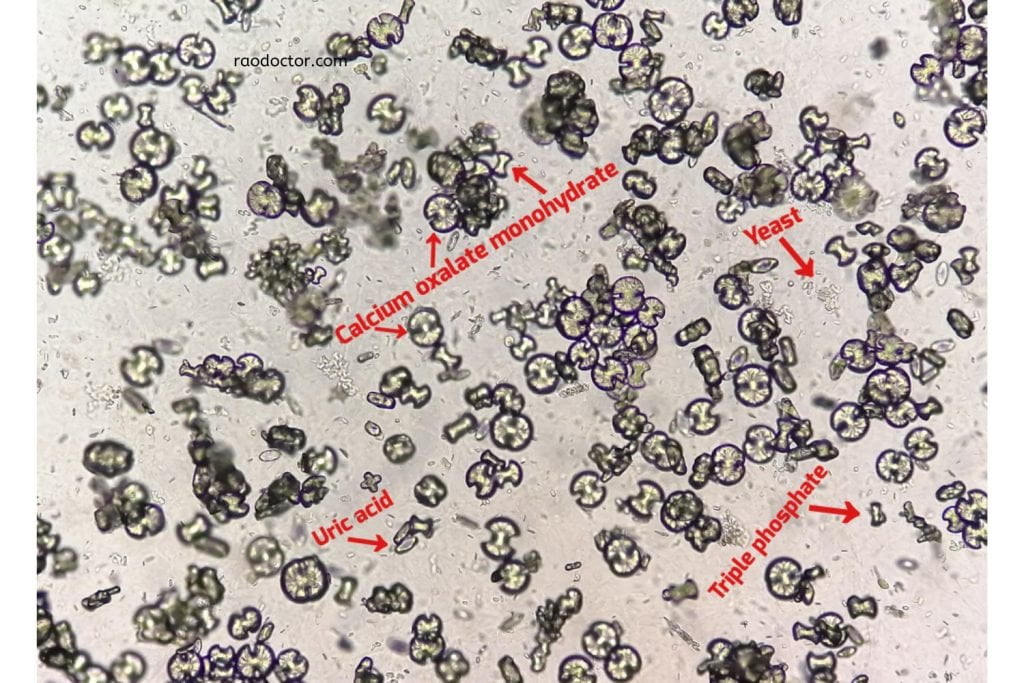
How to interpret your urine analysis
Your kidneys produce urine, and this urine is an excellent indicator of your current health. Healthy urine is usually clear, odorless, and free from excess sugar, proteins and bacteria.
If your urine exhibits any abnormal symptoms, it’s likely that your body is experiencing some kind of stress. The presence of certain enzymes and chemicals in the urine can indicate a number of different diseases, infections or other issues.
By taking note of the color, smell and general appearance of your urine on a daily basis, you stand a much better chance of catching any potential issues before they become serious problems.
Urine microscopy and dipstick testing are two diagnostic procedures that help to detect diseases earlier than would be possible by simply observing the appearance and smell of one’s urine. As such, these tests are common practice for most doctors practicing internal medicine.
What is Urine Microscopy?
Urine microscopy is an examination of your urine sample that has been put under a microscope in order to detect the presence of red blood cells and white blood cells.
The presence of these cells can indicate a number of different diseases, infections or other issues that may be affecting your urinary tract. Urine microscopy is a very reliable method for detecting an infection, especially in its early stages.
Blood cells in the urine are usually signs of some kind of infection, but they can also indicate stones or other obstructions in the urinary tract. Sometimes, your report may show the presence of Occult blood. It means it is seen on microscope but does show in the urine on naked eye examination, for e.g., reddish color of the urine.
White blood cells in the urine can indicate inflammation of the urinary tract and may also suggest that a bacterial infection is present. They may be reported as pus cells in the urine in high power fields. Normal range is 0 to 5 per HPF. A large amount of pus cells will cause the urine to appear thick and cloudy.
The Importance of Urine Dipstick Testing
Urine dipstick testing is a quick, easy and painless procedure that can give you and your doctor an accurate picture of the general health of your urinary tract.

This quick test can detect a number of different infections and diseases, including urinary tract infections (UTIs), gout and kidney infections. The dipstick test involves the application of a small paper strip that contains a number of chemical indicators. Shown below is a dipstik color chart that indicates various substances/ biochemical compounds/body cells etc., present or absent in your urine-

The strip is dipped into a small sample of your urine, which is then analyzed for the presence of protein, glucose, nitrate and blood.
The test is quick and easy to perform, but it does not tell you what caused the abnormal results, so if your dipsticks come back positive, your doctor will likely want you to undergo a more sophisticated analysis to identify the exact cause of the problem.
You can watch this short video on how to do a urine dipstick test and also how to interpret it-
Urine Color and Meaning

– Amber or cola colored urine: If you notice that your urine has taken on a cola or amber color, it’s likely that you are dehydrated. Dehydration can lead to urine that is darker than normal due to the presence of excess glucose. This variation in color is nothing to be alarmed about, but it is a sign that you need to increase your fluid intake.
– Chestnut brown urine: If your urine is dark brown, it is likely due to the presence of red blood cells in the sample. This variation in color can be caused by a number of factors, including some types of kidney stones, urinary tract infections and certain types of cancers.
– Rusty colored urine: If your urine takes on a rusty or orange color, it is likely due to the presence of hemoglobin in the sample. This is typically caused by kidney or bladder infections, or UTI.
– Cloudy urine: If your urine is cloudy, it may indicate the presence of bacteria or white blood cells in the sample. Cloudy urine can also occur when you take certain antibiotics, when you have a cold, or if you come into contact with certain types of chemicals.
Urine Odor and Meaning
– Normal urine odor: Normal urine should smell like nothing at all or have just a very mild and slight odor of ammonia. If your urine has a strong smell, it may indicate the presence of bacteria, protein or other contaminants.
– Sweet smelling urine: If your urine smells sweet, it may indicate a metabolic disorder such as diabetes or even a urinary tract infection.
– Foul smelling urine: If your urine has an offensive, foul odor, it may indicate the presence of bacteria, protein, or other contaminants.
– Strong smelling urine: If your urine has a strong, pungent odor, it may indicate the presence of bacteria, protein, or other contaminants.
Urine Protein Meaning
– Normal urine protein level: There is no set level for normal urine protein levels. Normal urine protein levels will depend on your overall diet and lifestyle. People who maintain a healthy diet and lifestyle and who don’t suffer from any debilitating diseases will generally have low levels of protein in their urine.
– High urine protein levels: High levels of protein in your urine may indicate that you are suffering from gout, diabetes or kidney disease. If your doctor detects high levels of protein in your urine, he or she may recommend that you undergo blood testing and a uric acid level test to determine what is causing the high levels of protein.
– Low urine protein levels: Low levels of protein in your urine may indicate that you are suffering from an underactive thyroid, are dehydrated, or have liver disease. If your doctor detects low protein levels in your urine, he or she may recommend that you undergo blood testing to determine what is causing the low protein levels.
Urine Sediment Meaning
– Normal urine sediment: Normal urine sediment should look like a fine sand, with no significant color or other characteristics. If your urine sediment has a significant color, it may indicate the presence of blood cells, bacteria or other contaminants.
– Increased sediment: Increased sediment may indicate a bacterial or viral infection of the urinary tract. It may also indicate the presence of certain types of kidney stones or other mineral deposits in the urine.
– Decreased sediment: Decreased sediment may indicate the presence of a bacterial or viral infection of the urinary tract. It may also indicate the presence of certain types of kidney stones or other mineral deposits in the urine.
Uric Acid Level and Crystal Detection
Uric acid is a byproduct of many metabolic processes in the body. When uric acid levels are normal, they usually exit the body via the urine without causing any issues.
Uric acid crystallizes in the urine of some people, however, where it can cause problems. When uric acid crystals accumulate in the urinary tract, they can cause irritation, bacterial infections and stones. In fact, as many as 50% of all kidney stones are caused by uric acid crystals. [see how the uric acid crystals appear under a microscope in the picture below]
Normal uric acid levels vary from person to person. For uric acid levels to remain normal, the kidneys must be able to properly filter the uric acid from the urine and remove it from the body.
If your kidneys are impaired in any way, they may be unable to properly filter uric acid from the urine and crystals may form.
A uric acid level test will allow your doctor to determine if your uric acid levels are within normal range or if they are causing problems.
Normal Results for Urine Microscopy and Dipstick Testing
– Normal urine microscopy: Normal urine microscopy should reveal no red blood cells or white blood cells in the sample.
– Normal urine dipstick results: Normal urine dipstick results should reveal no protein, glucose, blood or pus cells in the sample.
Abnormal Results for Urine Microscopy and Dipstick Testing
– Abnormal urine microscopy: Abnormal urine microscopy should reveal the presence of red blood cells or white blood cells in the sample. It will also reveal presence of crystals, casts and bacteria or yeast cells in the microscopy slide, as shown below-

– Abnormal urine dipstick results: Abnormal urine dipstick results should reveal the presence of protein, glucose or blood in the sample.
Conclusion
The presence of certain chemicals and enzymes in your urine is an excellent indicator of your current overall health. Healthy urine is usually clear, odorless, and free from excess sugar, proteins and bacteria.
If your urine exhibits any abnormal symptoms, it’s likely that your body is experiencing some kind of stress. The best way to catch any potential issues early is to be aware of what is normal for your urine and what isn’t. Taking note of the color, smell and general appearance of your urine on a daily basis will quickly allow you to catch any potential issues before they become serious problems.
Disclosure-
Some of the links used in this article are affiliate links. i.e., if you sign up for their paid program or make a purchase, I will get a commission, at no extra cost to you. Please be rest assured that I only recommend software/ products I genuinely believe in, and trust to be good for you too.

